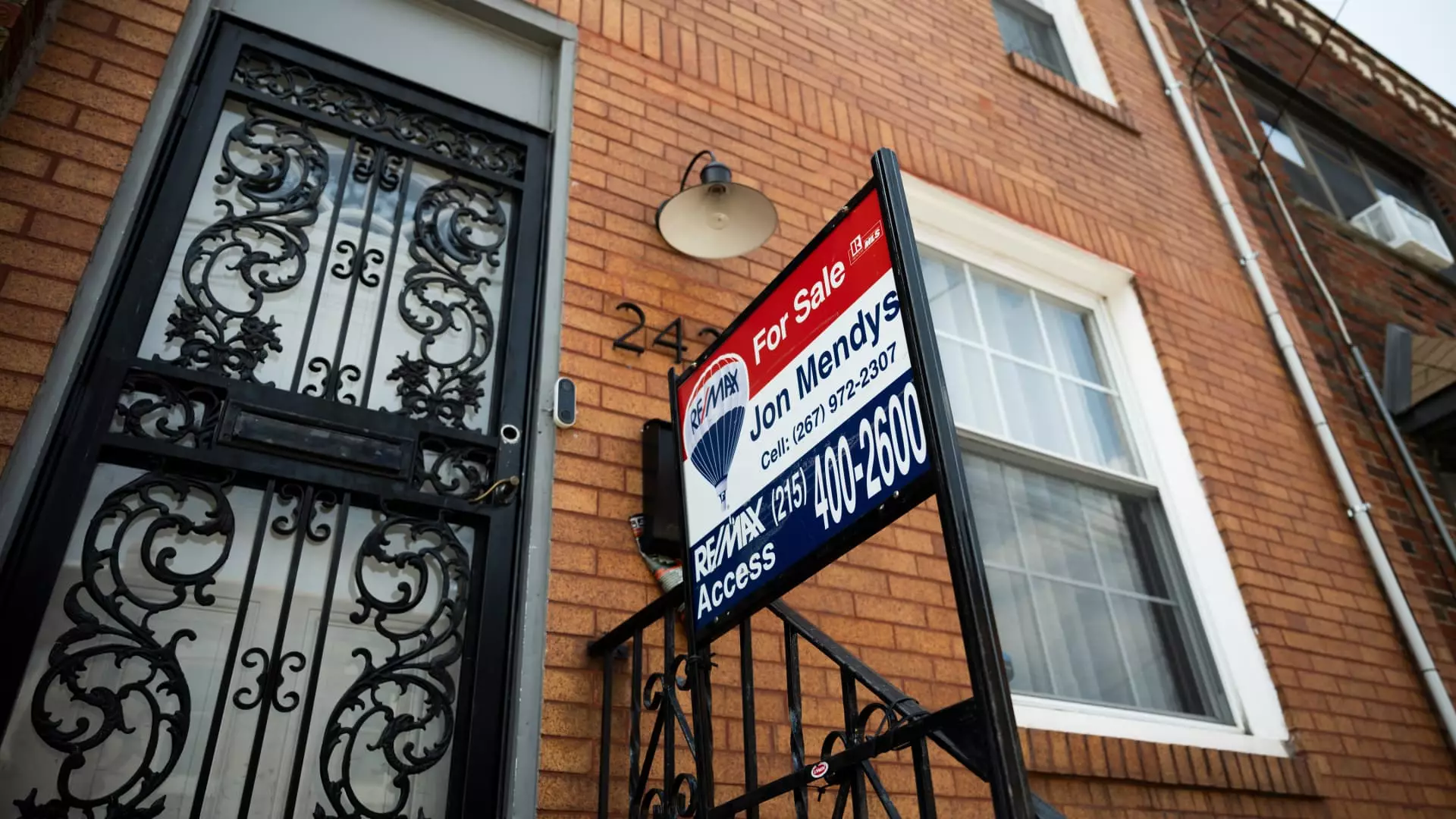Challenges in the U.S. Housing Market: A Deep Dive into January’s Trends

The U.S. housing market is currently negotiating a tumultuous landscape characterized by persistently high mortgage rates, elevated home prices, and a restricted inventory of listings. As detailed by the National Association of Realtors (NAR), January’s data highlights a profound decline in previously-owned home sales, underscoring the daunting obstacles that potential buyers face today.
The U.S. housing sector has seen sales of existing homes plummet by 4.9% from December to a seasonally adjusted annual rate of 4.08 million units. This decline outstripped analysts’ projections, which anticipated a 2.6% decrease. Notably, while sales reflected a 2% increase compared to January 2023, the current levels remain mired at a point not seen in nearly 15 years, highlighting the market’s struggle to regain momentum.
This figure indicates a parallel trend where contracts likely signed in the months of November and December, when mortgage rates dipped from over 7% to the lower 6% range, show an imperfect correlation with the sales figures reported. Lawrence Yun, the chief economist for NAR, articulated the frustration with the stagnation of mortgage rates, stating, “Mortgage rates have refused to budge for several months despite multiple rounds of short-term interest rate cuts by the Federal Reserve.” The implications of this are stark: the affordability crisis remains a significant hurdle for the average buyer, particularly in a market that is already grappling with elevated prices.
At the end of January, the housing inventory was reported at 1.18 million homes, reflecting a 3.5% increase from December and a significant 17% increase from the previous year. Despite this uptick, inventory remains precariously low, providing only a 3.5-month supply of homes based on the current sales pace. A healthy market is typically considered to have around a 6-month supply, suggesting that buyers are still entrenched in a competitive environment, where options are limited.
Moreover, the average time a home spent on the market in January was 41 days, the longest since January 2020, indicating that while there are more listings, the demand remains weak. The tight supply continues to put upward pressure on prices, pushing the median home price in January to a staggering $396,900—an increase of 4.8% from January of the previous year. This price point is noteworthy for being the highest recorded for the month, pointing to an ongoing issue where supply constraints simultaneously fuel price hikes.
The market dynamics also reveal a growing disparity based on price points. Homes sold at higher price levels are witnessing a resurgence in buyer interest, particularly properties listed over $1 million, which saw a nearly 27% increase in sales year-over-year. Conversely, lower-priced homes, specifically in the $100,000 to $250,000 bracket, experienced a 1.2% decline in sales over the same period. This bifurcation signifies that while affluent buyers can still be active in the market, first-time buyers and those at lower price points continue to feel the pinch of affordability constraints.
Interestingly, cash transactions constituted 29% of home sales, a historically high figure that remains slightly below last year’s 32%. This trend indicates that while some buyers can maneuver through the obstacles imposed by high mortgage rates via all-cash offers, many potential first-time buyers, who represented only 28% of sales—well below the historical average of 40%—are left struggling.
As we look ahead, the future of the U.S. housing market remains uncertain. Real estate professionals report a lack of buyer enthusiasm, despite a noticeable increase in available listings. “Realtors are putting more signs up, but the buyers are not coming,” Yun commented, pointing to an essential hurdle in the recovery process. As the market navigates these complexities, increased inventory alongside a reduction in mortgage rates will be crucial for ameliorating the conditions faced by both new and existing homeowners in what is an increasingly challenging housing landscape.
The juxtaposition of supply levels, affordability, and buyer behavior paints a vivid picture of a market that is not just on a downturn but must grapple with evolving economic realities. The road to recovery may be long, and the challenges daunting, but understanding these trends is the first step toward facilitating more accessible housing for all.





